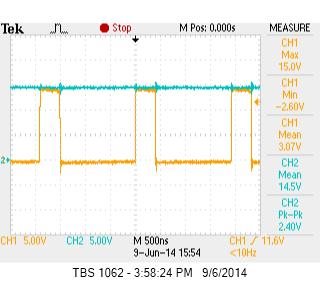Hi,
I have an issue with LM22674 QMR 5.0. I have followed the guide by Webench to design the circuit similar to the below: but design for Vin is 14V and Vo is 9V. Rfb1 and 2 at 432R and 330R .
However the first issue I got was that the Vout was about 2V and Vfb is about 1V. I also removed Rfb1 and Rfb2 to check Vfb but it showed 0V. What could likely be the problem ?
Thanks.


